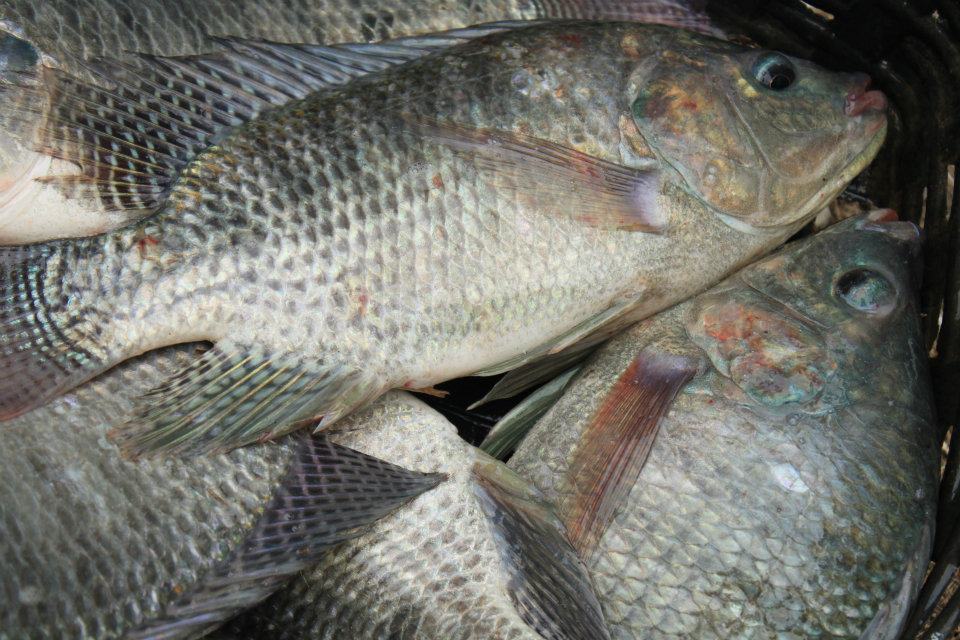The success of fish farming, whether conducted in cage or pond systems, hinges on maintaining the well-being and health of the fish population. In this article, we discuss key strategies for ensuring good tilapia fish health.
Water quality management
Water quality is paramount for tilapia health and growth. In both cage and pond systems, maintaining suitable water parameters is crucial. Regular monitoring of parameters such as temperature, dissolved oxygen levels, pH, and ammonia concentrations is essential. Ammonia, in high enough levels, can be toxic to tilapia. It is caused by the degradation of uneaten feed and inadequate waste management; therefore good feeding practices need to be observed. In earthen ponds practicing regular water exchanges, and minimising overcrowding are effective ways to prevent water quality degradation. In cages, regular cleaning of the nets ensures that waste does not build up over time.
Nutrition and feeding practices
Providing a balanced and nutritious diet is vital for tilapia health. Commercially formulated pelleted feeds, such as the Novatek Tilapia fish feed range, are commonly used. These feeds are scientifically formulated to provide a good balance of essential nutrients for the optimal growth and health of fish. Overfeeding should be avoided, as it can lead to excess waste production and decrease water quality. Feeding schedules should be consistent, and feed distribution should be monitored to prevent uneaten feed from accumulating.
Disease prevention and management
Disease outbreaks can devastate a tilapia farming operation. Preventive measures play a pivotal role in maintaining fish health. Regular sampling can help detect potential issues early and quarantine protocols for introducing new fish stock can prevent the introduction of pathogens. Minimising stress factors such as handling and transportation is crucial as stressed fish are more susceptible to pathogen invasion.
Biosecurity measures
Implementing strict biosecurity measures can significantly reduce the risk of disease outbreaks. In cage farming, ensuring that cages and equipment are regularly cleaned and disinfected can help prevent the buildup of pathogens. Pond farmers should avoid introducing potentially contaminated water or materials from external sources. Ensuring all personnel wash their hands and step through a disinfecting foot bath is one small way to reduce the chance of pathogens entering the farm.
Temperature
Like other fish species, tilapia rely on water temperature for their body temperature. Therefore, changes in water temperature, especially sudden changes, can negatively affect growth performance and cause mortalities. When transferring fish into a body of water, it is essential to slowly adjust the water to the body of water you plan to introduce them into.
Monitoring and record-keeping
Regular monitoring and thorough recordkeeping are fundamental for successful tilapia farming. Keeping track of water quality parameters, feeding schedules, growth rates, and any health issues can provide valuable insights into the overall health of the fish population. Detecting trends or anomalies early enables timely intervention and adjustments to farming practices.
Conclusion
Maintaining good tilapia fish health requires a holistic approach that encompasses water quality management, nutrition, disease prevention, biosecurity, temperature regulation, correct feeding and diligent monitoring. By implementing these strategies, fish farmers can create a conducive environment for tilapia to thrive, ensuring sustainable and profitable aquaculture operations.
Novatek is well known as Zambia’s leading stock feed producer and distributor. They pride themselves in supplying the best quality feed across the country. For information on Novatek’s wide range of products and quality feed, contact Robert Kanyembo, Novatek National Sales Manager on (+260) 97-125-2522.









